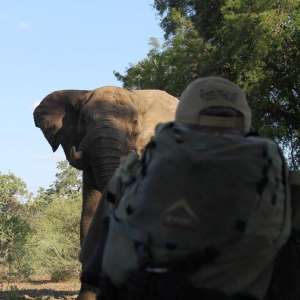What are the big 5?
Africa’s big 5 is made up of two carnivores, the lion and leopard and three herbivores, rhino, elephant and buffalo. The term Bif Five originates from game hunters who believed that these animals were the most dangerous to track and hunt on foot.
We have selected the top five Big 5 facts for each of these animals based on votes cast by our readers.
Big 5 facts: Lion – Panthera leo
As the King of the jungle, the lion is the apex predator of the African savanna. males can weigh up to a quarter of a ton and move at 22.2 metres per second in one sharp burst. With excellent night vision they are active hunters at night.
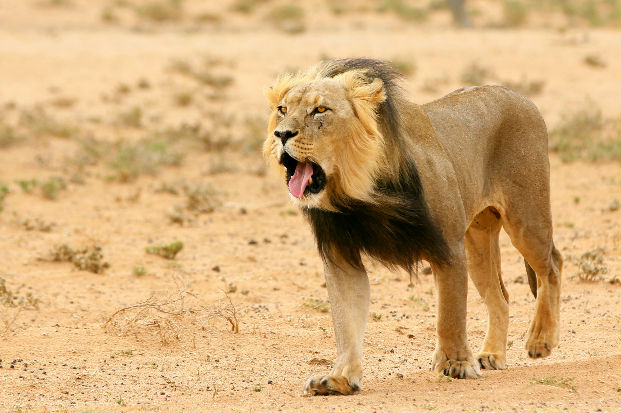
1. Eye sight
Their eye sight matches that of a human during the day but at night it’s over six times better. They are aware of their competitive advantage, so much so that even when they are hungry they stay inactive when it is negated by a full moon.
2. Hunting
When a stalking lion is spotted by its prey it will sit up and act innocently.
3. Scavangers
Lions will not pass up the opportunity of a free meal and scavenge when they can. So much so they will follow up on hyena calls and vulture activity to see what it may offer.
4. Speed
They can run at a top speed of 22.2 metres per second which they can reach in five strides and maintain for up to 100m.
5. Reproduction
A lioness goes through a period of infertility after the pride is taken over by incoming males. This may be an adaptation to see if the males are not just passing through.
For other extraordinary facts about the sexual reproduction of African animals please check out our dedicated fact file on the subject.
Big 5 facts: The African elephant (Loxodonta africana)
The African elephant is the world’s largest land mammal that is commonly found in herds. However, older bull elephants will often roam independently. A distinguising feature of the elephant is its trunk which has many uses.
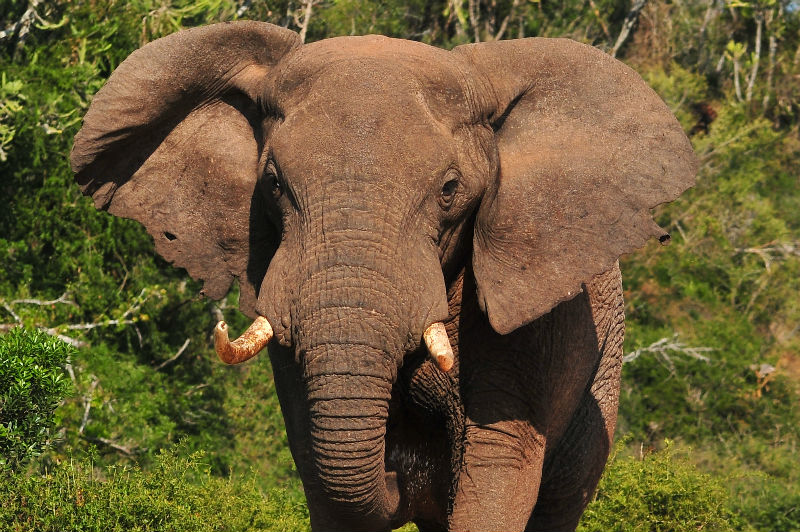
6. Memory
Elephants are highly intelligent with well-developed memories. This allows them to return to seasonal watering holes, grieve for the dead, harbour grudges and welcome back long lost herd members after years apart.
7. Trunk dexterity
The African elephant has two finger like projections at the end of its trunk. These are so sensitive and dextrous that it can pick up a needle from a flat surface.
Here’s a dedicated fact file on the elephant’s trunk.
8. New born elephants
Elephants are born with a stunted trunk which rapidly elongates over a few days. However, it takes three months for the calf to master this complicated tool.
9. Elephant temperature regulation
Every 20 minutes all the blood in an elephant’s body is pumped through its ears. This plays an essential part in regulating its temperature as heat is lost from the blood vessels which lie just below the surface of the skin.
10. No sweat
Elephants do not have sweat glands but they do cool down when water evaporates off their body. In times of extreme conditions, they sometimes put their trunk down their throat and suck water up which they then squirt over their body.
Big 5 facts: Rhinocerous (Family: Rhinocerotidae)
There are two species of rhinos native to Africa. They are the white rhino which is twice as bulky as the black rhino. These large herbivores with their iconic horns are under critical pressure from poaching.

11. Hearing
A rhino’s hearing is very good. This is aided by ears which rotate independently of one another to detect sound. Even during sleep its ears will instinctively move in different directions to detect the sound of possible danger.
12. Evolution of the horn
Horns first evolved in the dinosaurs and then in rhinos.
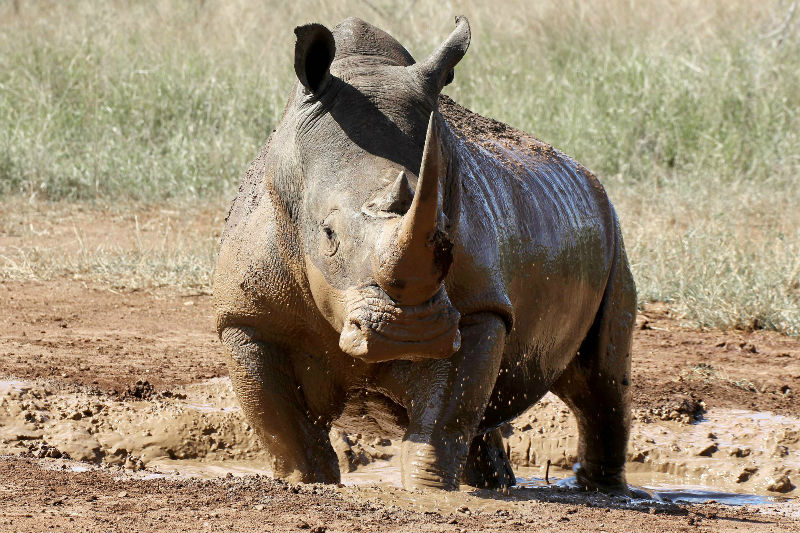
13. Rhino poaching
In 2007 roughly 20 rhinos were poached for their horn. The following year this surged to 83 and in 2013 1,004 were killed.
The following blog explains the underlying cause of the surge in rhino poaching. Here’s an article detailing the latest figures on rhino poaching.
14. Parental care
When fleeing from danger a white rhino’s calf will often run ahead of its mother whereas a black rhino calf will usually follow behind.
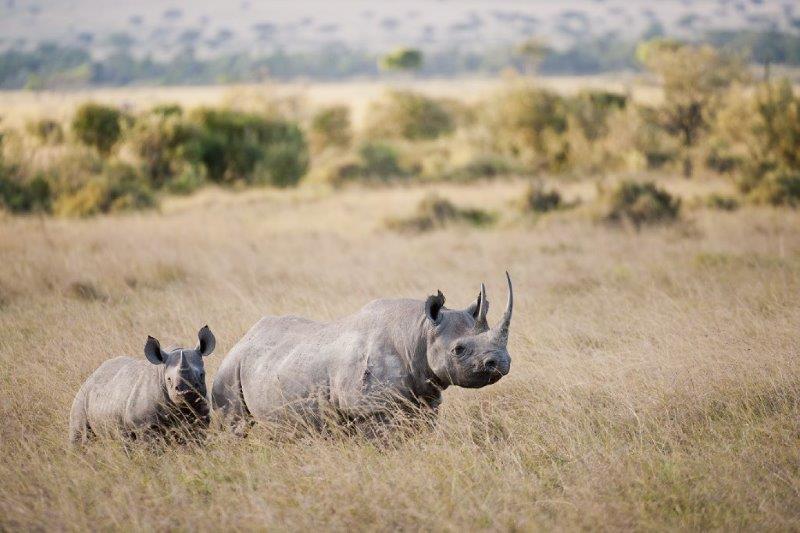
15. Rhino horn
Rhino horn is made of keratin, the same stuff as our finger and toe nails. This grows at between 2 and 7 cm a year. Like hair, rhino horn is not attached to the bone but grows from the skin.
Big 5 facts: African buffalo (Syncerus caffer)
Buffalos have the appearance of a domestic cow. The main exception being that both males and females have a large set of horns. As herbivores they eat large amounts of grass and need access to water to aid digestion which is done through rumination.
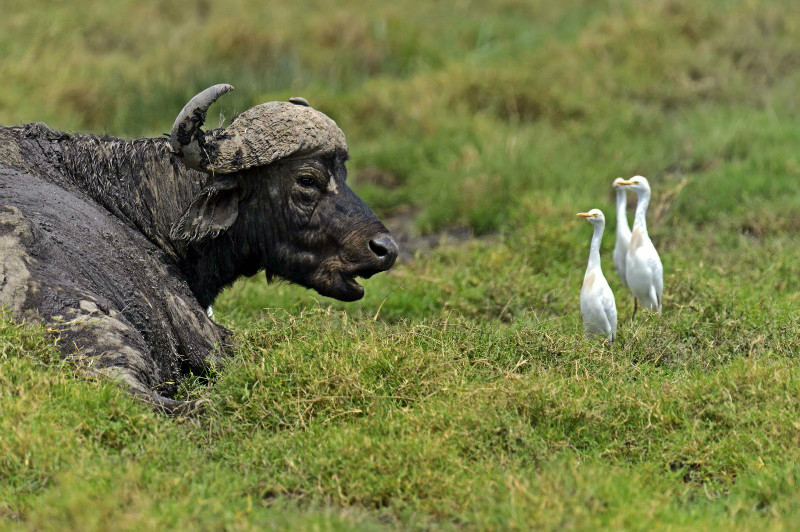
16. Buffalo diet
Because buffalo eat a large quantity of coarse material they need to drink regularly, up to twice a day managing as much as 34 litres in just 6 minutes.
17. Rinderpest
Rinderpest was a disease in the 1890s which almost wiped out the buffalo, estimates say that for every buffalo that lived, 10,000 died.
18. Buffalo horns
A buffalo bulls horns can grow to be 100 cm wide, 141 cm along the curve.
19. Dagha-boys
Older buffalo bulls may choose to drop out of the herd and wander alone or in small groups. These animals are known as “dagha-boys” referring to the Zulu word for mud given their preference for wallowing.
20. Buffalo pathfinders
The movement of a herd is determined by individual buffalo called pathfinders. Despite this important role these animals do not have to be high ranking.
Big 5 facts: Leopard (Panthera leopardilis)
The leopard is a stocky cat which is incredibly strong. It is famed its ability to drag heavy carcasses up trees to keep them away from scavangers. Their spotted coat means it can blend into the landscape and make them very hard to spot.
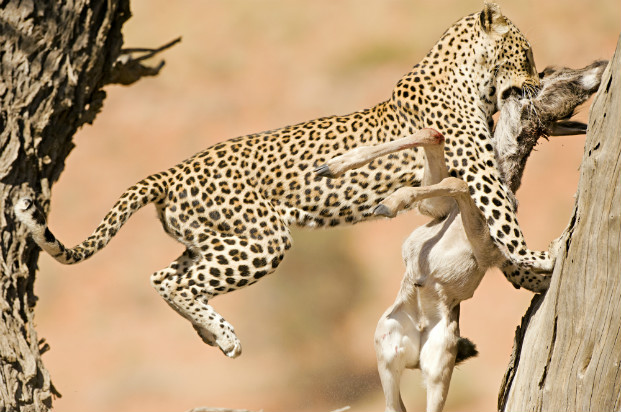
21. Safeguarding prey
A leopard may sometimes remove the gut of its prey so that the smell does not give away its location to scavengers such as hyenas and lions.
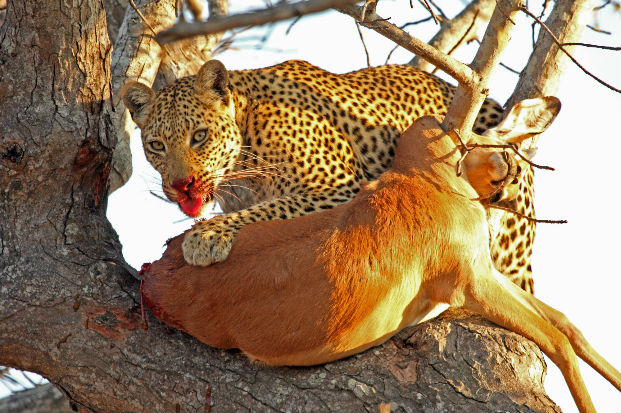
22. Leopard call
The call of a leopard is very similar to somebody sawing wood.
23. Melanistic leopards
A black leopard is simply a normal leopard that has excessive levels of a black pigment known as melanin.
24. Evolution of big cats
It’s believed that modern big cats have evolved from a leopard prototype which was well adapted for taking the smaller prey that the sabre-toothed could not catch.
25. Sexual reproduction
Mating leopards will do so every five to ten minutes for two to five days, this is similar to lions.
Why are the called the Big 5?
Discover more
Explore further with our individual facts files on:
Check out our definitive post on the Safari Guie. Everything you need to know about what the job of a safari guide is, what they do and how to become one. Safari guides are also known as Field Guides. In this detailed post we explain the difference between a guide, a game ranger and a ranger.

 Previous Post
Previous Post


